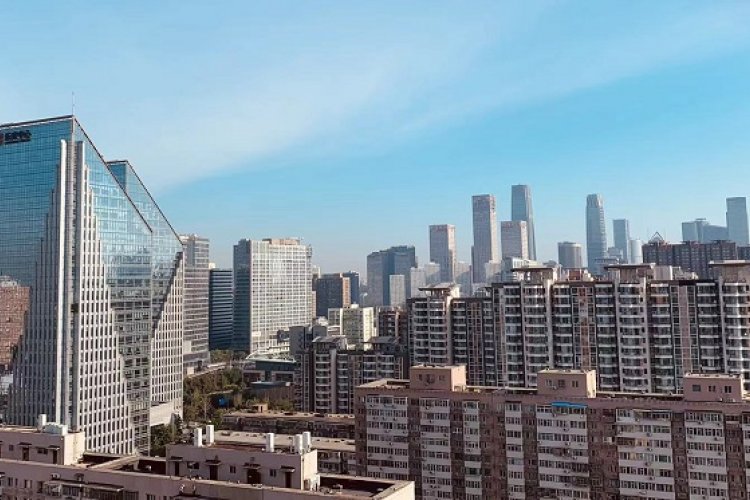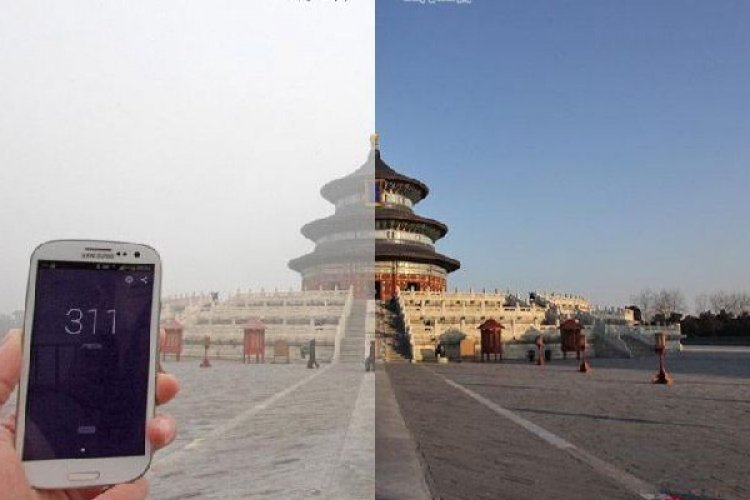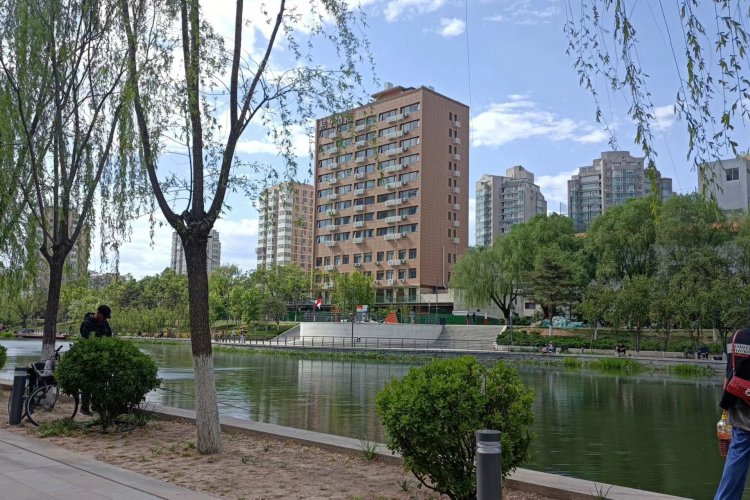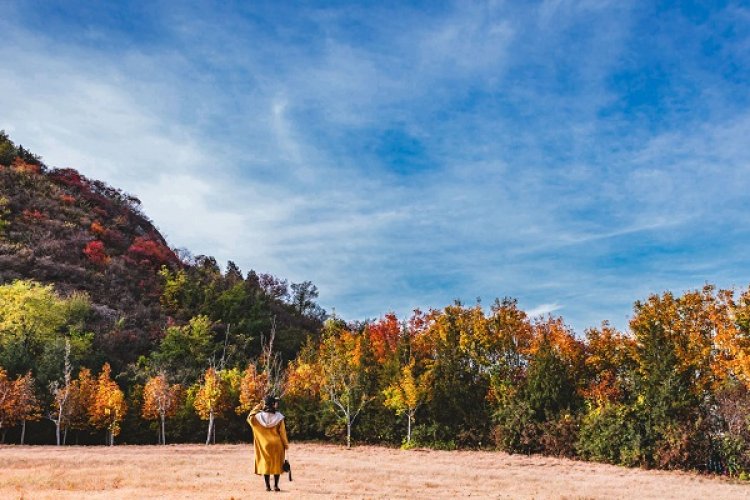Beicology: What's in a Beijing Sandstorm?
How bad is the smog these days, really? Who is keeping tabs on the state of our drinking water? What has the government done about carbon emissions lately? In Beicology we turn our focus toward environmental news in the capital.
Though it may not amount to the 360,000 tons of sand that invaded the capital in 2015, the fact remains that springtime sandstorms in Beijing are a hell of a lot more common than any of us would like to admit.
Environmental scholars have recently found that sand and dust storms have actually been on the decline in East Asia since the 1980s due to shifting climates, and yet Northern China has not been spared from the winds that blow sand in from Mongolia. Beijing has embarked on major reforestation projects to help shield the city from the sand, but forestation takes time, so for now, we’re bound to see a few yellow skies this time of year.

That being the case, we thought we would explore what exactly is in the air on a sandy day and how a sandstorm differs from typical smogged-up sky.
Is it really just PM 10?
As you might have guessed, sandstorms bring along a large number of coarse particles or PM 10. At the height of this morning’s storm, PM 10 levels reached more the 7,500 micrograms per square meter and settled around 4,000 by noontime. For comparison, the most polluted day in the past three weeks saw just 180 micrograms per square meter of PM 10.

But the catch is that sandstorms bring more than just sand and dust. They also bring in significant amounts of fine particles, or PM 2.5. Today, PM 2.5 levels reached 418 micrograms per square meter, compared to just 160 on the smoggy days mid-last week. Studies dating back to 2005 confirm that such spikes in fine particulate matter are common for Beijing’s sandstorms.
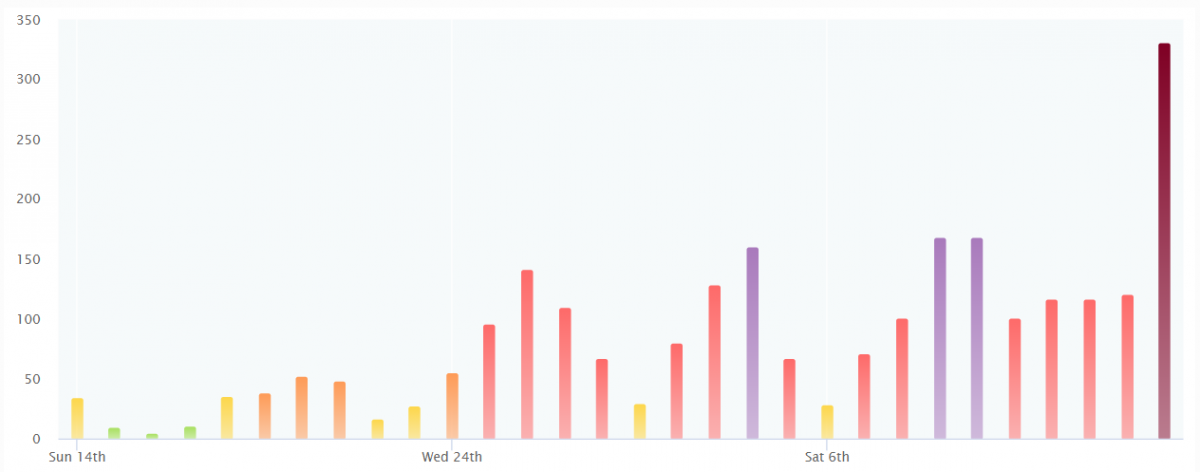
However, that’s not to say sandy days are the equivalent of a badly polluted day plus coarse particles. The composition of the particles differs in a key way – while both polluted days and sandy days come with sulfate and nitrate particles, sandstorms are largely free from the organic matter particles that result from burning fossil fuels. Moreover, there is no connection between sandstorms and the harmful gasses that you’ll breathe in on a polluted day like nitrogen dioxide, sulfur dioxide, and O-zone.
What does this mean for my health?
Even here in Beijing, where particulate matter is, unfortunately, a part of everyday life, we often talk about PM 2.5 as if it’s a monolith – specks so tiny that our nose can’t catch them, and that get caught in our lungs because they’re too small for our bodies to dispel. But as we’ve just discussed, not all skies of PM 2.5 are made of the same stuff.
It’s often assumed that sulfate and nitrate particles are harmful because they are common ingredients in PM 2.5 pollution, which we know is harmful. But that might not actually be the case. As one medical study from 2007 put it (emphasis mine),
Sulfate and nitrate constitute a significant portion of the particle mass in the atmosphere, but are accompanied by similar amounts of carbonaceous [organic] material, along with low concentrations of various species, including bioactive organic compounds and redox cycling metals. Extensive animal and human toxicology data show no significant effects for particles consisting only of sulfate and nitrate compounds at levels in excess of ambient air concentrations.
On the other hand, that doesn’t mean we’re completely safe in a sandstorm. Studies on sandstorms, particularly in Northwestern China, have shown that the coarse particles can be harmful or even lethal, particularly to those with or at risk of heart disease. So, on days like today, it’s best to strap on the heavy-duty mask if you’ve got one lying around.
READ: Beicology: Study Finds Beijing is One of China’s Best Places for Preserving Biodiversity
Images: Anna Pellegrin Hartley, IQAir
Related stories :
Comments
New comments are displayed first.Comments
![]() Class4-teens
Submitted by Guest on Sun, 04/11/2021 - 12:25 Permalink
Class4-teens
Submitted by Guest on Sun, 04/11/2021 - 12:25 Permalink
Re: Beicology: What's in a Beijing Sandstorm?
So true.I mean, land o' Goshen, we uster get week-long tornadoes of asbestos particles and SARS virus. We hadder work 16 hour days in it too, outside and buck nekkid. But you tell kids that nowadays, and they don't believe you!
Validate your mobile phone number to post comments.


